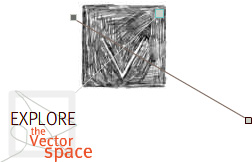Crowds
Editor's Introduction
On Saturday, March 25, 2006, over 500,000 supporters of immigration rights took to the streets of downtown Los Angeles, staging one of the largest demonstrations in recent U.S. history. Outraged by extreme anti-immigration legislation under consideration in Congress, this confluence of individuals came together in a peaceful protest that gave physical presence to the growing political power of Latinos in the United States. By Sunday, most physical traces of that particular crowd had vanished, even as new crowds coalesced in a wave of similar marches across the country in the weeks that followed, including another gathering of half a million in Dallas on April 10th. Yet even as the crowds dispersed, images of the protests graced the front pages of every major newspaper in the country, and Congress, at least temporarily, suspended action on anti-immigrant legislation. The power and scale of the gatherings inscribed the national imaginary. Thus, force and tenuousness limn twin functions of the crowd, mapping over its simultaneous status as at once ephemeral and iconic. Indeed, the iconicity of the crowd as emblematic of modernity may track quite closely to the crowd's ephemeral and emergent nature.
Undertaken as a multi-year research project of the Stanford Humanities Lab, Crowds productively considers these and other aspects of the crowd as a powerful cultural, political, and historical phenomenon. The site brings together an extensive database of writings, images, sound files, videos, and other artifacts in order to query whether or not, following Gustave Le Bon, we still live in "the era of crowds". Across the many points of view offered in the site (and in the ancillary materials that form the larger project), Crowds allows us to slice through various takes on how such public gatherings emerge and, more importantly, on how they function.
The project also explores the degree to which crowds evince a tension between the one and the many, the individual and the mass. In one of the site's 'testimonies', Michael Hardt distinguishes the multitude from the crowd, noting that "the concept of the multitude is meant to name a set of singularities," while the crowd often slips into the faceless mob or mass. In its very structure, in its lines and grids, Crowds draws upon this notion of singularity within unity, creating a rich, multi-perspectival investigation of public gatherings that at once respects the macro and the micro, the one and the many. Its bits and pieces, its individual players (from the furrowed brow of that marcher from Selma to the catty commentary of Jessica Burnstein), remain distinct even while they collectively paint a larger picture. The project stages an intermedial and transdisciplinary approach to its subject matter that simultaneously functions as a model of expanded scholarship, translating the work of the academy for broader public consumption, both on the internet and in various museum settings. Finally, in its invitation to curate a new gallery or add a new testimony, Crowds also creates a possible space for public dialogue, inviting someone to tell the stories of the anti-immigration protests that are unfolding as I type.



